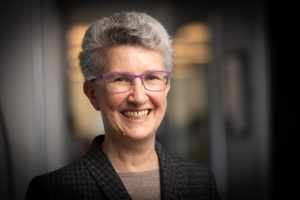On August 1, 2022, I published a letter here about the consolidation of the Value Reporting Foundation — home to the SASB Standards, Integrated Reporting Framework, and Integrated Thinking Principles — into the IFRS Foundation. That was a remarkable milestone in the journey to embed sustainability information into capital markets infrastructure. I’m now writing to update you on the progress we’ve made post consolidation and a transition in my role.
Last year, I took on the role of Special Advisor to the Chair of the ISSB to help ensure the success of the ISSB and support the transition of the VRF into the IFRS. The goals of the IFRS/VRF consolidation were to 1) deliver on market demand for simplification, 2) secure the future of the SASB Standards and Integrated Reporting Framework, and 3) advance progress towards a global baseline of sustainability disclosure for investors. We’re proud to report that we’ve actively advanced these goals.
I’d like to highlight a few aspects of this progress. First, the ISSB, which is complete with 14 members, has taken its final decisions on the technical content of its initial standards—General Requirements (S1) and Climate-related Disclosure (S2) and is targeting publishing the final standards towards the end of Q2.
Second, the ISSB’s first two standards utilize the SASB Standards.
- S1 provides the basis for achieving a global baseline of sustainability disclosure that meets investor needs by requiring that companies disclose material information about sustainability-related risks and opportunities. To help companies identify their sustainability-related risks and opportunities and provide appropriate disclosures, S1 requires companies to consider the industry-based SASB Standards for topics beyond climate.
- S2 provides the details for how to meet investor needs for climate disclosures. It is based on the TCFD Recommendations with industry-specific climate metrics based on the SASB Standards included as illustrative guidance.
There is also a mechanism in place to enhance and evolve the SASB industry standards on an ongoing basis. A group of ISSB members—chaired by Jeff Hales, former Chair of the SASB Standards Board—has been established and tasked with developing recommendations for the ISSB related to the maintenance, evolution and enhancement of the SASB Standards.
Thanks to our dedicated Board and staff, and the involvement of stakeholders around the world, the ISSB has made significant progress to date. As such, now is a fitting time for me to transition to a new role. At the end of March, I will step back from my special advisor position and full-time role at the IFRS Foundation to pursue the next phase of my professional life. To continue to support a smooth transition, I will join the Transitional Advisory Group of former VRF Directors who advise the IFRS Trustees on achieving the critical success factors related to the IFRS/VRF consolidation. I will continue to serve on the IFRS Foundation’s Integrated Reporting and Connectivity Council. I am also joining the boards of B Lab Global and the International Foundation for Valuing Impacts (IFVI).
The merger of the VRF into the IFRS Foundation was an important step in creating a global system for sustainability disclosure that has the commensurate level of maturity, credibility, and acceptance as financial accounting. I am immensely proud of the work we’ve accomplished together and will continue to be a lifelong champion for the ISSB and the value of industry-based sustainability standards.
To our many stakeholders who have participated in this evolution of the sustainability disclosure landscape, thank you for your ongoing support. The ISSB has much important work ahead—I encourage your ongoing involvement as we move toward achieving a global baseline of sustainability disclosure for the capital markets.

